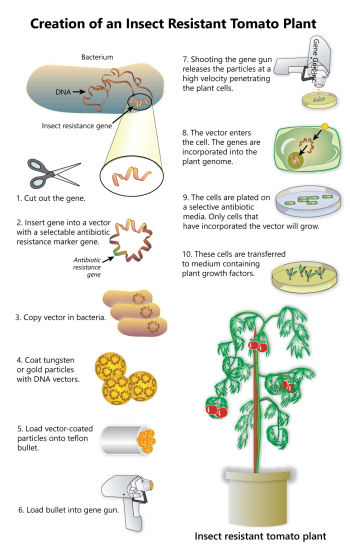Monsanto Is About to Escape All Regulation From the US Department of Agriculture

What’s an intentional mutation? Nothing more than a fancy technological phrase which describes a new way that biotech is getting around regulatory approval for genetically modified crops.
Scientists have already created ‘designer monkeys’ by orchestrating precise genetic mutations. The same technology used to achieve this feat more than ten years ago is now being used by companies like Scott’s (of famed and failed GMO grass) to create genetically modified food without the oversight of the United States Department of Agriculture (USDA) or of the US Food and Drug Administration (FDA).
It isn’t as though these alphabet agencies offer much protection to the average US consumer anyway. Considering that no long-term studies have been conducted on altered DNA and human health, and the fact that the USDA and FDA seem to give their rubber stamp to almost every biotech creation without a second glance, many people have long turned to other ‘experts’ to get their facts on genetically modified foods.
However, taking away the regulatory process makes it that much easier for biotech companies like Monsanto, Bayer, Dow, Scott’s, etc. to infiltrate non-GM crops with their altered plants.
Until now, at least the guise of a regulation would stall a biotech company long enough for the public to get wind of their plans, and to at least voice their concern, if not smoldering outrage, at a GM apple that doesn’t brown, or GE salmon that grows ten times the size of non-GM salmon.
Click for large version.
How do companies like Scott’s plan to unleash new GM grass, and other genetically modified crops? By utilizing “genome editing” which wasn’t even heard of when regulations for GMO crops were originally penned.
Plant researchers at the University of California, Davis, have remarked that the regulatory framework has become “obsolete and an obstacle to the development of new agricultural products.”
The system is indeed obsolete, but not for the reasons Big Ag thinks. If companies like Monsanto have their way, genome editing will be used instead of the previous methods for altering living organisms by genetically altering DNA material through artificial manipulation in a laboratory. In this way, they can bypass the FDA and other agencies throughout the world who are trying to ban GMOs.
The genetic manipulation (through gene transfer) process already differs from traditional hybridization where only species that are very similar can be combined to produce a new offspring. For example, in hybridization practiced by gardeners and horticulturalists you would never put a bacteria gene inside a plant gene to create a plant that is essentially a pesticide – and then end up with plants that, when consumed, are cytotoxic to the human organism.
Genome editing is the process of precisely targeting a gene for mutation. Harvard researchers describe the process thusly:
“. . . developing genome-scale editing tools as fast and easy as word processing have rewritten the genome of living cells using the genetic equivalent of search and replace — and combined those rewrites in novel cell strains, strikingly different from their forebears.”
“The payoff doesn’t really come from making a copy of something that already exists,” said George Church, a professor of genetics at Harvard Medical School, “You have to change it — functionally and radically.”
By altering crops in this way, biotech companies are, according to Michael Hansen, senior scientist for Consumers Union:
“…using a technical loophole so that what are clearly genetically engineered crops and organisms are escaping regulation. [Gm grass] can have all sorts of ecological impact and no one is required to look at it.”
If gene editing isn’t completely predictable for pharmaceutical drugs, how can we be sure that gene editing will result in anything different than other biotech practices that have been used to genetically modify crops to date? Without regulatory oversight, these practices will also likely be carried out without the public’s awareness, and once again we will be eating food that is, in the least, very questionable.
There are multiple methods of gene editing, but this video from MIT explains one of them.
Pics Courtesy of: http://learn.genetics.utah.edu/content/science/gmfoods/
| Christina Sarich is a humanitarian and freelance writer helping you to Wake up Your Sleepy Little Head, and See the Big Picture. Her blog is Yoga for the New World. Her latest book is Pharma Sutra: Healing the Body And Mind Through the Art of Yoga. |
Follow us: @naturalsociety on Twitter | NaturalSociety on Facebook


